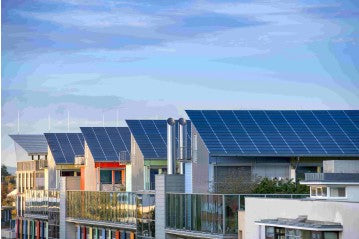
Solar panels have gained immense popularity in recent years as a clean and sustainable energy source. Harnessing the power of the sun, solar panels convert sunlight into electricity, making them an excellent choice for those looking to reduce their carbon footprint and save on energy costs. One common question among customers interested in solar energy is how to connect solar panels to a battery bank. In this blog post, we will guide you through the process, step by step, to ensure a successful connection.
Tools And Materials You Need
Before we delve into the process, let's gather the necessary tools and materials. You will need an electrical wiring diagram to understand the connections better. Additionally, make sure you have an ample supply of wire, junction boxes, and splices for secure connections. AC breakers and sub-panels are crucial components for safety and proper distribution of power. AC disconnects and fuses protect the system from overloads and short circuits. PV meters help monitor the performance of your solar panels, and EMT & ENT conduits are useful for protecting and organizing your wiring.

Step-By-Step Guide
Now, let's proceed with the step-by-step process of connecting your solar panels to the battery bank.
Step 1: Mount Your Solar Panels
Start by mounting your solar panels in a suitable location where they can receive maximum sunlight. The panels should be angled correctly for optimal efficiency. Ensure that the panels are securely attached to prevent any damage or accidents.

Step 2: Set up the Solar Charge Controller and Battery
Next, you need to set up the solar charge controller and battery. The charge controller regulates the flow of electricity from the solar panels to the battery bank, preventing overcharging and damage. Connect the positive and negative terminals of the charge controller to the corresponding terminals of the battery bank.
Step 3: Test Your Solar Charge Controller
Before connecting the solar panels, it's essential to test your solar charge controller. This step ensures that the controller is functioning correctly and will protect your battery bank. Follow the manufacturer's instructions to perform the necessary tests and ensure everything is working as expected.
Step 4: Connect Your Charge Controller to the Solar Panels
Now it's time to connect your charge controller to the solar panels. Begin by connecting the positive and negative terminals of the charge controller to the corresponding terminals of the solar panels. Use appropriate wiring techniques and secure connections to ensure efficient power transfer. Pay attention to the polarity and follow the manufacturer's guidelines to avoid any mistakes.
Do You Always Need to Pair Your Solar Panels with a Battery?
While connecting solar panels to a battery bank is a common approach, it's important to note that it's not always necessary. If your primary goal is to offset your electricity usage and feed the excess power back into the grid, you can opt for a grid-tied solar system without a battery. In such a system, any surplus electricity generated by your solar panels can be sold back to the utility company, allowing you to earn credits or reduce your electricity bill.
However, pairing solar panels with a battery bank provides several advantages. It allows you to store excess energy for use during periods of low sunlight or power outages. Additionally, a battery bank enables you to achieve energy independence and increases your resilience to grid failures. You can enjoy uninterrupted power supply and peace of mind knowing that you have a backup energy source.
Conclusion
In conclusion, connecting solar panels to a battery bank is a straightforward process that requires careful planning and attention to detail. By following the step-by-step guide outlined in this blog post, you can successfully connect your solar panels to a battery bank and enjoy the benefits of clean, sustainable energy. Whether you choose to offset your electricity usage or achieve energy independence, solar panels combined with a battery bank offer an excellent solution for a greener and more reliable energy future.

0 Kommentare